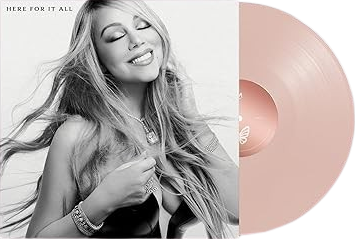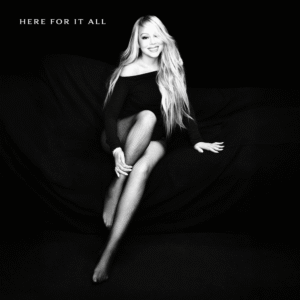
Mariah Carey’s first studio album in seven years draws warm notices for craft, harmonies, and a retro‑modern palette—alongside recurring calls for bolder songs and fewer safe patches.
If you’re searching for Mariah Carey “Here For It All” reviews, this piece compares 10 major outlets side‑by‑side—highlighting what they loved, what they didn’t, and where the consensus lands.
The Big Picture
Across early coverage, a pattern snaps into focus: Here for It All is a poised, grown R&B record that prioritizes songcraft, harmony stacks, and satin‑lined arrangements over shock‑and‑awe reinvention. Reviewers consistently applaud the album’s retro‑modern chassis—Motown shadings, disco flickers, gospel lift—and the way Carey deploys her voice with veteran restraint: fewer pyro notes, more placement, blend, and late‑song lift.
The sharpest needle comes from The Times (UK), which distills the core debate into a single, stark verdict: “five‑octave range still there but Mariah needs new songs.” Some outlets echo that sentiment more gently, praising the elegance while wishing for riskier writing or edgier production choices. Others hear the same choices as confidence and coherence rather than caution.

What Critics Loved
The voice, used with intent
Even mixed reviews single out how authoritative the instrument remains when it’s stacked, layered, and saved for impact. Think head‑voice finesse, selective belts, and harmonies that turn choruses into cathedrals.The retro‑modern palette
From plush mid‑tempos to devotional climaxes, critics celebrate the album’s analog warmth and light‑on‑its‑feet grooves. It’s classic Mariah sensibility without trend‑chasing maximalism.Tasteful features that serve the song
Cameos (e.g., Anderson .Paak; The Clark Sisters) color in the corners without siphoning spotlight. The collaborations feel chosen for chemistry, not clout.
Where It Fell Short
Song strength vs. star power
Multiple outlets argue that the writing doesn’t always rise to the level of the performance. That Times barb—“five‑octave range still there but Mariah needs new songs”—has become the shorthand for this critique.A conservative risk profile
Words like “relaxed,” “restrained,” and “safe” recur. Admirers hear serenity and intentional minimalism; skeptics hear an opportunity for bolder, sharper edges.Mid‑tempo blur
A few reviews note pacing dips where glossy mid‑tempos slide past without a knockout hook, making the peaks feel higher than the valleys but the valleys a touch too long.
Ten Outlets at a Glance (Praise vs. Pushback)
Rolling Stone — Loves the warm, throwback sheen and measured delivery; wishes for a few bolder swings.
The Independent (★★★★) — Applauds the “lovely grit” in her delivery and the devotional lift of key moments; notes she largely stays in her lane.
The Times (★★) — “five‑octave range still there but Mariah needs new songs.”
Slant (≈ 3/5) — Enjoys the ’70s soul/disco and gospel colors; wants tighter focus and fewer stylistic detours.
RIFF (5/10) — Salutes the enduring power of the voice; flags some mid‑album drag.
The FADER — Welcomes the intimate, devotional register; reads the restraint as a feature, not a bug.
The Arts Desk (3/5) — Praises “stunning musicianship” and an upper‑register glow; side‑eyes the syrupy moments.
Entertainment Focus — Calls it “timeless and fresh”; says one or two tracks feel slight.
Showbiz411 — Frames it as an earthy, classic‑leaning set where the voice leads.
Billboard (context) — Day‑of pieces emphasize durability and spotlight the title track as an anchor.
Tracks Critics Kept Circling
“Here for It All” (title track): The emotional anchor; a steady climb to a devotional finish that showcases control over bombast.
“Nothing Is Impossible”: Piano‑led resilience; a vocal arc that many singled out as quintessentially Mariah.
“Play This Song” (feat. Anderson .Paak): Easy retro chemistry that fits the album’s palette.
“Jesus I Do” (feat. The Clark Sisters): A gospel glow that underlines the record’s spiritual thread and closes the set with uplift.
Early Scorecard
The temperature skews positive to mixed‑positive: admiration for craft, control, and cohesion, tempered by calls for sharper hooks and a little danger. It reads less like a reinvention play and more like a statement of identity—an artist choosing polish and poise over pyrotechnics.
Here for It All is not the table‑flip; it’s the victory lap. The album doubles down on arrangement, harmony, and mood—the exact levers Carey has always pulled best. The upside, nearly every outlet agrees, is sumptuous, self‑possessed Mariah with a voice placed like fine china rather than hurled like a discus. The downside: stretches of safety and mid‑tempo sameness that keep it just shy of a late‑career swerve. If that’s your frequency, there’s plenty here to love. If you came craving shock therapy, you might find yourself nodding along with the line that now defines the detractors’ case: “five‑octave range still there but Mariah needs new songs.”
But at the end of the day, it’s about Mariah still releasing music without needing to prove anything—reaching straight for the feeling and touching the hearts of her fans, who absolutely loved this album.




